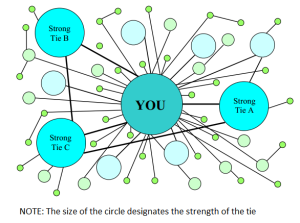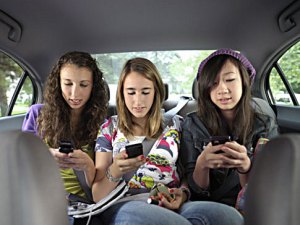The 21st century the home can be considered the command centre or central nerves system of mankind, within these modern times its status has increased exponentially, and we often find ourselves rushing home to the safe lure of Wi-Fi and social networking. New innovations in technology become easily adopted and accommodated into our routines and around the home creating a space of ‘media ecology’, saturated with our digital devices and virtual lives.
That being said a digital divide still exists as only 79% of households have access to the internet, but the NBN promises to assist in the ongoing shift from a ‘singular, wired and fixed to multiple, wireless and mobile’ internet access and makes plans to provide high-speed broadband that will “mediate, amend and reconfigure the domestic media and communications ecology” (Nansen, Arnold, Wilken, and Gibbs 2012). Advocates of NBN expresses that internet access is an essential requirement needed to participate in the ‘digital economy’; a sector which has grown immensely thanks to the declining cost of telecommunication hardware and services, emerging mobile internet access platforms and the increased use of social media (Nansen, Arnold, Wilken, and Gibbs 2012).
“Households with only dial-up or no Internet service are increasingly being left behind in the information age. Increasingly fast Internet access is required for accessing essential information and undertaking domestic and non-domestic business as both government and the private sector are increasingly conducting their business, or aspects of it, on-line” (Moreland City Council)
Vitak explains that the home acts as a source for multiple ‘social establishments’ defined as “any place surrounded by fixed barriers to perception in which a particular kind of activity regularly takes place within that fixed location” (Erving Goffman 1959 quoted in Vitak 2014, p. 22). Vitak explains that there are two types of social establishments within the home environment, one resides in the physicality of the home itself (internet connection) which acts as a central hub for access; the other has become more prominent with the invention of the World Wide Web or Web 2.0. The second, the virtual world or more specifically social networking sites such as Facebook, create a complex new layer we need to consider when examining the home; and this aspect will be the main focus of my discussion.
With our dependency on broadband and our fixed location within in the home, social media becomes an escape to the world outside, thus our social media profiles becomes an extension of ourselves, a ‘virtual reputation’, a way which we control how people view us defined by Spigel as ‘Impression Management’ (2001, p. 400); which determines your social standings and associations within a society, similarly to the system within real life. However there remains temporal differences between the two, and herein lies the appeal of social media; unlike a conversation which takes place in real time, leaving little room for error, social media users partake in what Turkle outlines as the ‘Goldilocks Effect’. Meaning that social networking allows us to present the self as we want to be, “We get to edit, and that means we get to delete, and that means we get to retouch, the face, the voice, the flesh, the body — not too little, not too much, just right” (2012). While our real world identity can be considered as the sum of our traits and interactions as presented in a social setting; our virtual identity is completely constructed through the information presented on our profiles on these social networking websites, a selective reality we represent.
Similarly to real life we can also make ‘friends’ on these social network sites, and current academic research is focused on the value and differences between online and offline relationships, seeking to analyse how online relationships affect our offline interpersonal communication skills (one-on-one interaction between 2 people or a small group). These virtual friendships satisfy many of the characteristics of traditional friendships without the limitations of time, place and identity; allowing its members to connect from anywhere, anytime without geographic constraints. Meaning that unlike my Grandmother and mother who made friends primarily within their immediate vicinity or through participating in similar offline activities, today’s youth have the possibility to form relationships with people they may have never met in real life, communicate daily and instantaneously rather than a few times a year and make larger and more diverse social networks (Fig 1). While many researches boast about social network’s ability to connect and sustain relationships on a daily basis and connect “discreet bits of information” (Turkle 2012) they do note that most people using the internet for social purposes also maintain offline relationships and found that “stronger online relationships were also maintained offline” (Silverstone 1992).
Teens gathering with friends in created “network publics” (Boyd 2014, p.201) turn to social media as a means of “engaging with their broader world” (Boyd 2014, p.203), but often neglect those around them, and as Turkle states we are comfortable with “being together while not being together, we’re getting used to a new way of being alone together”, and turn instead to social networks filled with ‘automatic listeners’. As Turkle goes on to explain we think that “being always connected is going to make us feel less alone”.
One question to ask oneself is ‘Is your online life overpowering your offline?’ if so create technology free zones’ and ultimately my advice, DISCONNECT TO CONNECT.
Refrencces
Boyd, D 2014, It’s Complicated, Yale University Press, New York, pp. 190 – 215
Nansen, B., Arnold, M., Wilken, R. and Gibbs, M. 2012, Broadbanding Brunswick – High- speed Broadband and Household Media Ecologies: A Report on Household Take-up and Adoption of the National Broadband Network in a First Release Site, Australian Communications Consumer Action Network, Sydney
Silverstone, R, and Hirsch, E. 1992, Consuming Technologies: Media and Information in Domestic Spaces. London: Routledge
Spigel, L 2001, ‘Media Homes: Then and Now’ , in International Journal of Cultural Studies, Volume 4, No. 4, pp. 385–411.
Turkle, S 2012, ‘Connected but Alone’, Ted, accessed 22/08/2014, http://www.ted.com/talks/sherry_turkle_alone_together/transcript
Figure 1 taken from: Vitak , J.M 2008, ‘Facebook “Friends”: How Online Identities Impact Offline Relationships’, PHD Thesis, Georgetown University, Washington


Hi there Whiteafrican, I have been following your blog for a while now and really enjoy your content, you seem to be more personal these days and your new look makes the site look even better. Keep up the good work.